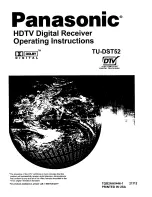
Page 8 of 90
CCT24
configured to send join announcements to a host application for an unlimited number of radios. The
application can then verify the continued presence of each radio in the network through periodic polling.
The CCT24 also supports a
RemoteLeave
command that allows a host application to release a radio from
the network. This is useful to remove any rogue radios that may have joined then network when authenti-
cation is not being used. It is also useful to remove remotes from the network once they have been ser-
viced by the application. The
RemoteLeave
command includes the amount of time the radio must leave
the network, which can be set from 2 seconds to more than 36 hours. In addition, a radio can be told to
leave and not rejoin until it has been power-cycled or reset. The base can use
RemoteLeave
to keep
track of remotes that have not yet been serviced, allowing networks of more than 126 remotes to be
indirectly tracked by the base.
2.2 Authentication
In many applications it is desirable to control which radios can join a network. This provides security from
rogue radios joining the network and simplifies network segregation for co-located networks. Registration
is controlled by the
AuthMode
parameter in the base. The
AuthMode
parameter can be set to one of four
values, 0..3. The default value is 0, which allows any remote or router to register with a base.
When the
AuthMode
parameter is set to 1, a radio’s address must be listed in Parameter Bank 7 before it
will be allowed to register with the base. This is referred to as base authentication. Bank 7 must be pre-
loaded with the addresses of the authorized remotes before using base authentication. If a radio whose
MAC address is not in Bank 7 attempts to join the network the base will deny the registration request. A
maximum of 16 remotes can be entered into Bank 7. To support larger networks, mode 2 must be used.
When the
AuthMode
parameter is set to 2, the address of a radio attempting to register with the base is
sent to the host for authentication in a
JoinRequest
message. The host application determines if the radio
should be allowed to register and returns a
JoinReply
message to the base containing a
PermitStatus
parameter that allows or blocks the radio from registering. The host application has 30 seconds in which
to respond, after which time the base denies registration to the radio. Up to 16 join requests can be
pending at any one time. If more than 16 radios are asking to join, the first 16 will be serviced and addi-
tional radios will be serviced after the earlier requests are handled. The
RegDenialDelay
parameter
controls how often a radio will request registration after it has been denied. If it is anticipated that more
than 16 radios will request registration before the application can service the first 16, this parameter
should be set to the time it will take the application to service four requests, as this will speed the authen-
tication process by freeing the base from issuing multiple denials to the same remotes.
When the
AuthMode
parameter is set to 3, authentication is locked to the addresses of the radios current-
ly registered with the base. Mode 3 is typically used in conjunction with Mode 0 during a commissioning
process.
AuthMode
is set to 0, radios are turned on and allowed to register with the base, and
AuthMode
is then switched to 3 to lock the network membership.
2.3 Serial Port Modes
CCT24 radios can work in two data modes on the primary serial (UART) port: transparent and packet
protocol. Transparent mode formatting is simply the raw user data. Protocol mode formatting includes a
start-of-packet framing character, length byte, addressing, command bytes, etc. Transparent mode opera-
tion is especially useful in point-to-point systems that act as simple cable replacements. In point-to-
multipoint, peer-to-peer and tree-routing systems where the base needs to send data specifically to each









































